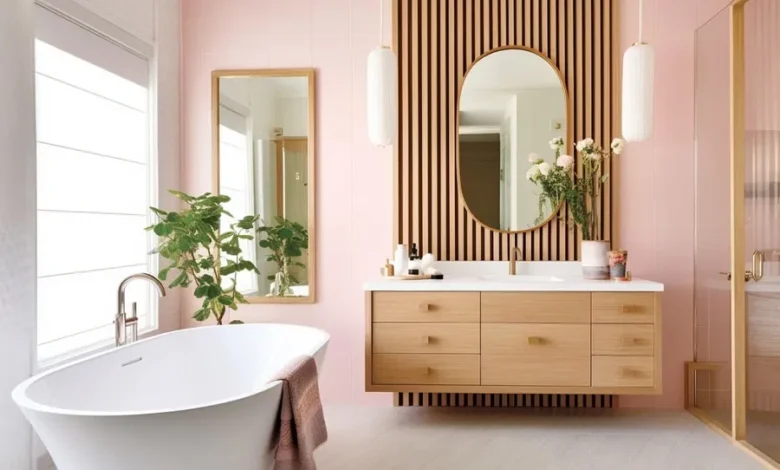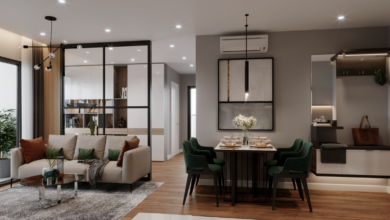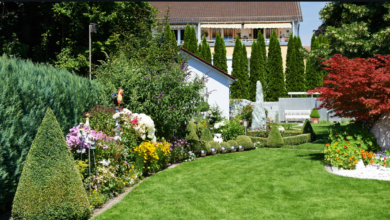Planning a Bathroom Makeover: Timeline, Budget and Design Tips

Is your bathroom stuck in the past? Maybe the tiles are cracked, the vanity is falling apart, or you just can’t stand looking at that outdated color scheme anymore. A bathroom makeover can transform your daily routine and add real value to your home. But jumping in without a solid plan can lead to blown budgets, endless delays, and a whole lot of stress. This guide will walk you through everything you need to know about planning your bathroom renovation, from setting a realistic budget to creating a timeline that actually works.
Why Planning Your Bathroom Makeover Matters
Many homeowners dive into bathroom projects without proper planning. They think they’ll figure it out as they go. This approach almost always leads to problems. Costs spiral out of control. The project takes twice as long as expected. And the final result doesn’t quite match what they had in mind.
Good planning saves you money, time, and headaches. Studies show that bathroom renovations can give you back up to 70% of your investment when you sell your home. That’s a solid return. But only if you do it right. Taking time to plan means fewer surprises during construction. It means making smart choices about where to spend your money. And it means you’ll actually get the bathroom you’ve been dreaming about.
If you’re in Sydney and feeling overwhelmed by the planning process, working with experienced professionals who specialize in Bathrooms Renovations Sydney can help you avoid common pitfalls and ensure your project stays on track.
Setting Your Bathroom Renovation Budget
Money matters. And bathroom renovations can get expensive fast if you’re not careful. The first step is understanding what things actually cost.
Understanding Cost Ranges
Your budget will shape everything else about your project. Here’s what you can expect at different price points:
Basic updates ($5,000-$10,000): This covers cosmetic changes like new paint, updated fixtures, a new vanity, and maybe fresh flooring. You’re not moving any plumbing or knocking down walls. Just making what you have look better.
Mid-range remodel ($10,000-$25,000): Now we’re talking about real changes. You might relocate fixtures, install a new shower or tub, upgrade to better materials, and add improved lighting. Most family bathrooms fall into this range.
High-end luxury ($30,000+): This is where you get the spa bathroom of your dreams. Think heated floors, premium stone surfaces, custom cabinetry, and top-of-the-line fixtures. You’re not just renovating. You’re creating something special.
Smart Budgeting Tips
Whatever your budget is, always add 20% extra for surprises. And trust me, there will be surprises. Old houses hide problems behind walls. Plumbing might need updating. You might discover mold or structural issues.
Put your money where it matters most. Spend on good plumbing work and quality fixtures. These are things you use every day. They need to last. You can save money on cosmetic items like paint, mirrors, and accessories.
Get quotes from at least three different contractors. Prices can vary a lot. But don’t just pick the cheapest option. Look at their experience, reviews, and how well they communicate. A slightly higher price often means better quality work.
Creating a Realistic Timeline
Time is the other big factor in any renovation. You need to know how long things will take so you can plan your life around the project.
Typical Bathroom Remodel Timeline
Here’s what a standard bathroom renovation looks like from start to finish:
Planning phase (2-4 weeks): This is when you make all your big decisions. What fixtures do you want? What colors? What layout? You’re also getting quotes and picking your contractor during this time.
Material ordering (1-2 weeks): Once you’ve decided what you want, you need to order it. Some items ship quickly. Others, especially custom pieces, can take weeks or even months. Order early.
Construction (2-4 weeks): For a typical bathroom, expect about three weeks of actual work. Week one is usually demolition and rough plumbing or electrical. Week two brings new surfaces, fixtures, and tile work. Week three is finishing touches like paint, trim, and cleanup.
Some things can stretch your timeline. Permits might take longer than expected. You might find structural problems that need fixing. Custom orders might get delayed. That’s why building in buffer time is so important.
Timeline Planning Tips
Order all your materials before construction starts. Nothing slows down a project faster than waiting for a vanity or shower door to arrive.
Plan for how you’ll manage without your bathroom. If it’s your only bathroom, can you use a neighbor’s shower? Get a gym membership? Stay with family for a few weeks? Figure this out before demolition day.
Schedule any required inspections early. Don’t wait until the inspector is holding up your project. Call ahead and get on their calendar.
Always add extra time to your timeline. If your contractor says three weeks, plan for four or five. Life happens. Projects rarely finish early, but they often run late.
Essential Design Decisions
Now for the fun part. This is where you get to decide what your new bathroom will actually look like and how it will function.
Layout and Functionality
Start by thinking about what doesn’t work in your current bathroom. Is the shower too small? Not enough counter space? Poor storage? Make a list of problems you want to solve.
Moving plumbing is expensive. Really expensive. If you can keep your toilet, sink, and shower in roughly the same spots, you’ll save thousands. But if the layout just doesn’t work, it might be worth the extra cost.
Think about the future too. Are you planning to age in place? You might want a walk-in shower instead of a tub. Growing family? A double vanity might be worth the investment.
Small bathrooms need smart solutions. A wall-mounted toilet saves floor space. A corner shower opens up the room. Light colors make spaces feel bigger. Big mirrors create the illusion of more space.
Choosing Materials and Fixtures
Your choices here affect both how your bathroom looks and how much maintenance it needs.
For flooring, ceramic or porcelain tile is the gold standard. It’s waterproof, durable, and comes in endless styles. Luxury vinyl is a more affordable option that still looks great and handles moisture well.
Countertops see a lot of use. Quartz is low maintenance and comes in many colors. Natural stone looks beautiful but needs more care. Laminate works for tight budgets but won’t last as long.
Your vanity sets the tone for the whole room. Choose one with enough storage for your needs. Soft-close drawers are worth the extra money. You’ll use them multiple times every day.
Don’t forget about lighting. You need bright light around the mirror for grooming. But you also want softer ambient light for relaxing baths. Layer your lighting with a mix of fixtures.
Popular Design Trends for 2025
Walk-in showers are replacing tubs in many homes. They’re easier to clean, more accessible, and feel more spacious.
Double vanities are huge for couples. No more fighting over sink space in the morning.
Neutral colors are dominating bathrooms right now. Think whites, grays, and natural tones. They’re timeless and make spaces feel calm and clean.
Energy-efficient fixtures save money and help the environment. Low-flow toilets and showerheads have come a long way. You won’t sacrifice performance for efficiency anymore.
Smart features are creeping into bathrooms. Heated floors, fog-free mirrors, and programmable shower systems make daily routines more comfortable.
Common Mistakes to Avoid
Learn from other people’s errors so you don’t repeat them.
Don’t skip the planning phase. Jumping straight to demolition without solid plans causes problems. You’ll make expensive mistakes and have to redo work.
Don’t underestimate costs. That budget you set? It’s going to be tested. Without that 20% buffer, you might run out of money before the job is done.
Ventilation isn’t glamorous, but it’s crucial. A good exhaust fan prevents mold, protects your investment, and keeps your bathroom healthier. Don’t cheap out here.
Style matters, but function matters more. That gorgeous farmhouse sink might not have enough counter space around it. Those trendy tiny tiles might be a nightmare to clean. Think about daily use, not just photos.
Know your limits with DIY. Painting and installing a mirror? Go for it. Plumbing and electrical work? Call a professional. Mistakes here can be dangerous and expensive to fix.
Storage is often an afterthought. Plan for where you’ll keep towels, toiletries, cleaning supplies, and all the other bathroom necessities. Built-in storage is worth the investment.
Bad lighting ruins good design. One overhead light isn’t enough. Plan for multiple light sources at different heights and purposes.
Conclusion
Planning a bathroom makeover doesn’t have to be overwhelming. Start with a clear budget and add that safety cushion for surprises. Create a realistic timeline that accounts for planning, ordering, and construction time. Make thoughtful design choices that balance style with function. And avoid the common mistakes that trip up so many homeowners.
Take your time in the planning phase. The decisions you make now will affect your daily life for years to come. Do your research. Get multiple quotes. Think about what you really need versus what just looks cool in photos.
Yes, bathroom renovations are a big project. But with proper planning, they’re absolutely manageable. And the payoff is worth it. Imagine starting every day in a bathroom that works perfectly for your needs and makes you smile. That’s what good planning gets you. So take a deep breath, make your plan, and get ready to create the bathroom you’ve been dreaming about.





